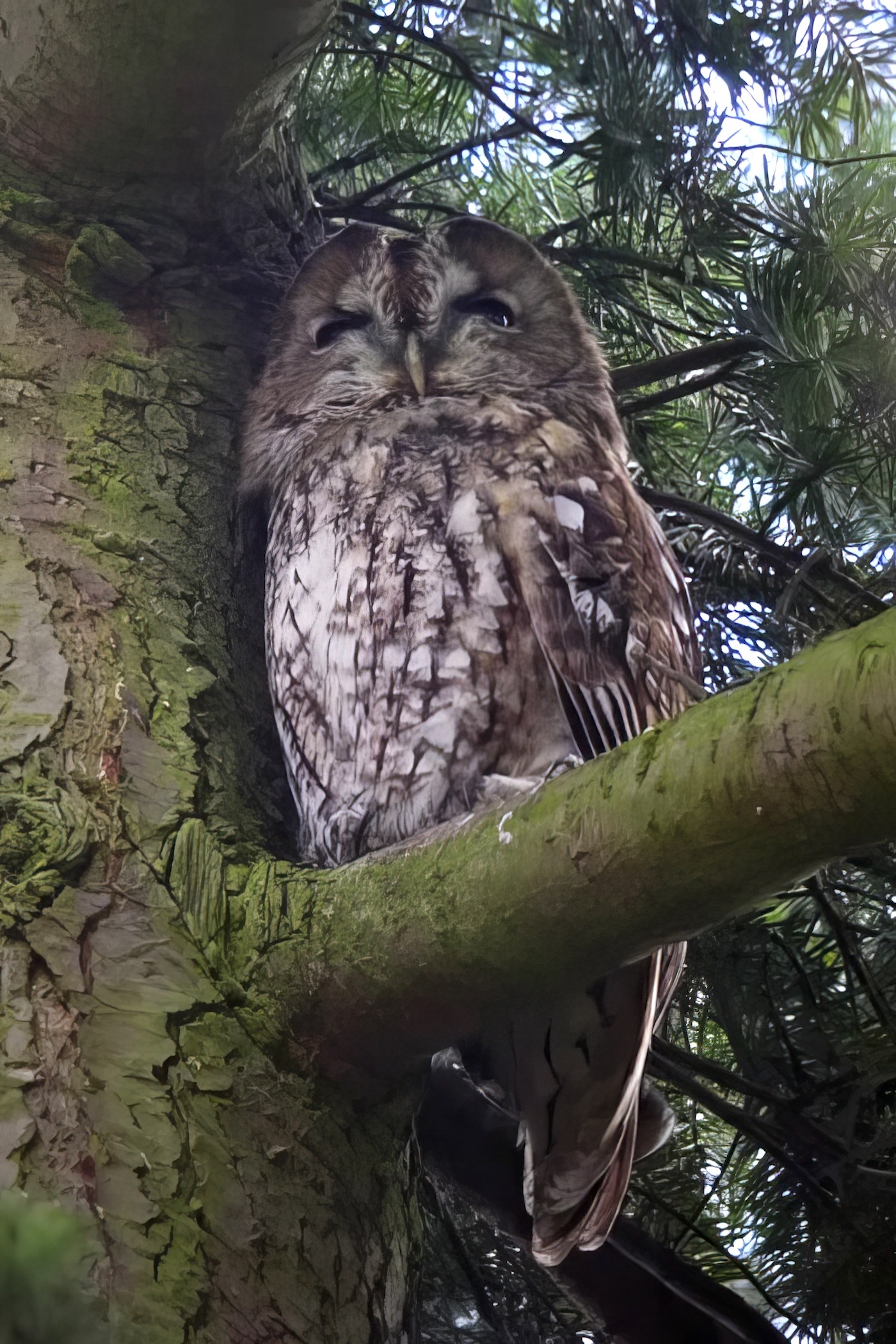Tawny Owl Strix aluco
Common resident, widespread but predominantly in wooded areas.

Tawny Owls will breed in natural tree holes or nest boxes, but will also occasionally use old nests of species such as Carrion Crow, Magpie, Sparrowhawk or Buzzard. Always thought of as having a very stable breeding population, Tawny Owls are reckoned to have declined over the last couple of decades, hence BoCC Amber conservation status from 2015. The results of an extensive BTO survey from 2018/19 are awaited and as yet the causes of the decline are uncertain. A ringing scheme based in South Kesteven monitors a constant number of nest boxes. Reports in LBR indicate that between 2011 and 2018 the numbers of nests in the boxes ranged from 6 in 2015 to 60 in 2014 with an average of 27. The first eggs are usually laid in February, but most pairs do not begin until mid-March or later. The total number of chicks ringed each year ranged from only 5 in 2018 to 112 in 2014. The extremely poor productivity in 2018 was attributed to the “beast from the east” weather event in late February-early March of that year reducing the ability of adults to hunt as well as reducing prey species. In Bourne Woods for example the 14 pairs in 2017 went to zero in 2018. This is often the cases in other years when variable numbers of pairs of Tawny Owls choose not to nest and this may be part of the problem in the recently observed decline.
Tawny Owls have been ringed in the county for some time now although the number of broods ringed varies from year to year. The data in the table below is largely from birds in the south and south-west of the county (courtesy of Alan Ball and Bob Sheppard). The average number of chicks fledged from those broods that were ringed has varied between 1.5-2.3, a reasonably steady success rate and much less variable than Barn Owls for instance.
| Nest box data | 2014 | 2015 | 2016 | 2017 | 2018 | 2019 | 2020** | 2021 | 2022 | 2023 |
| Total number of nests* | 60 | 6 | 23 | 42 | 8 | 36 | 1 | 32 | 28 | 36 |
| Number of failed nests | 4 | 0 | 2 | 1 | 2 | 4 | 1 | 0 | 0 | 6 |
| Broods ringed | 53 | 3 | 20 | 32 | 3 | 22 | 0 | 29 | 21 | 19 |
| Chicks ringed | 112 | 5 | 40 | 68 | 5 | 39 | 0 | 57 | 36 | 25 |
| Average number of chicks/brood ringed | 2.1 | 1.7 | 2.0 | 2.1 | 1.7 | 1.8 | 0 | 2.0 | 1.7 | 1.3 |
*Total nests = "missed" and "outcome unknown" as well as ringed + failures; note that the 2020 season was curtailed due to COVID-19 restrictions**.
